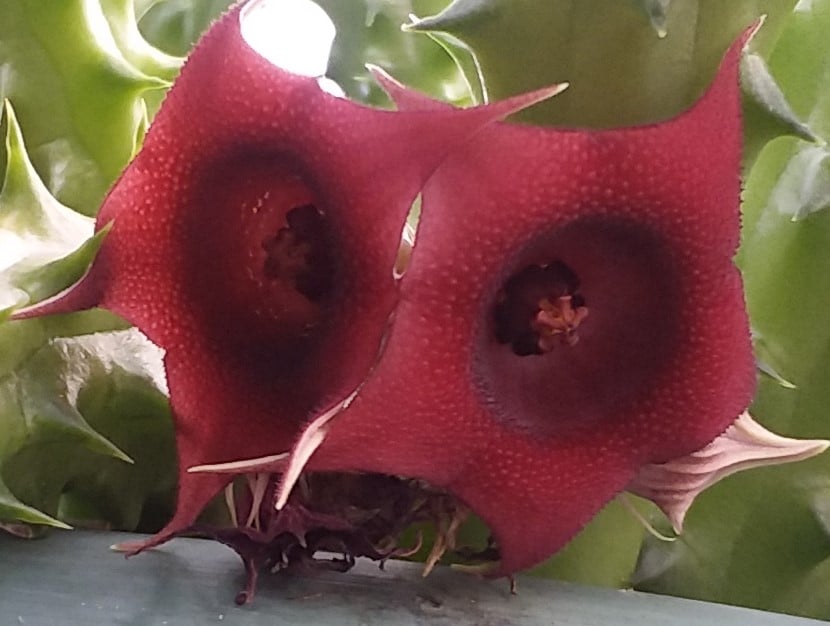For your consideration: The Red Dragon Flower
October, 15 2020
"You can’t buy happiness, but you can buy succulents! And that is pretty much the same thing."
— Jessica Anna Jones
Huernia schneideriana, aka red dragon flower, is one of my favorite succulents, not only because of its texture and draping habit, but also because it is exceedingly easy to propagate. A few years ago, my husband gifted me a cutting, which had been gifted to him during a morning stroll by a neighbor and, as they say, the rest is history.
The plant is one of 64 Huernia species, named for the Dutch missionary and botanist, Justus Van Heurne, who was reputedly the first collector of Huernia succulents. As an interesting bit of trivia and either by mistake or design, the species name is spelled differently from that of the botanist, with the letters E and U transposed.
Huernia schneideriana is basally branching and has waxy-coated, fleshy, green, 6-7 angled cylindrical stems that conserve water. As with other succulents, water conservation is accomplished through microscopic, mouth-like stomata (pores) that remain closed during the day to reduce transpiration and then open at night for the intake of carbon dioxide, which is used in daytime in the photosynthesis process.
The red dragon flower’s “teeth” (tubercles) appear prickly upon first glance but are quite smooth to the touch. A shallow root system allows the root hairs to absorb water less than an inch below the surface and so a shallow, well-draining container works just fine for growing purposes. Petite inflorescences, or flower clusters, grow from the base or middle of the stems and, although the flower is not particularly showy, its 5-point corolla and velvety, rich burgundy color are lovely to behold.
Huernias enjoys filtered sun/bright shade and plenty of water during bloom season in the summer, with much less water needed in winter. Always make certain to avoid applying too much water, which can easily result in “wet feet” and, ultimately, root rot. The succulent also appreciates an occasional application of half-strength fertilizer.
Because the plant is clump-forming, occasionally removing select stems at the base will allow for better aeration. By taking this action you will also be able to see signs of stress more easily. While caring for the plant, be on the look-out for stem and root mealybugs and conditions of root rot, the most prevalent issues experienced.
Plant propagation can be accomplished by taking stems from the base of the plant or offshoots. After removal, allow the cuttings to dry and callus for a few days. With or without the benefit of a rooting powder application, you can then plant the cuttings upright in a well-draining container of potting or gritty succulent mix. Another way to propagate is to lay stem cuttings on the mix and the undersides will form roots.
Happy gardening!
Janetta Fox is a member of the Garden Club of Cape Coral and a Lee County Master Gardener Volunteer.
Sources:
Huernia schneideriana (red dragon flower). World of Succulents
How to grow and care for huernia succulents. Inspire Bohemia
